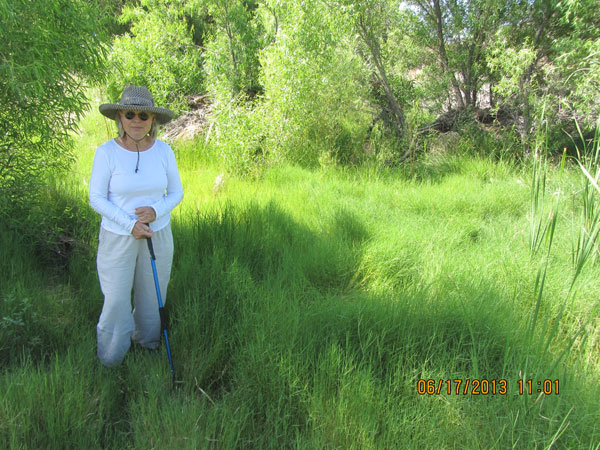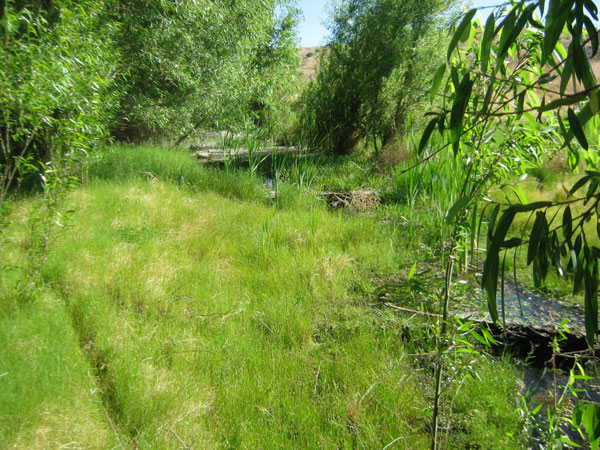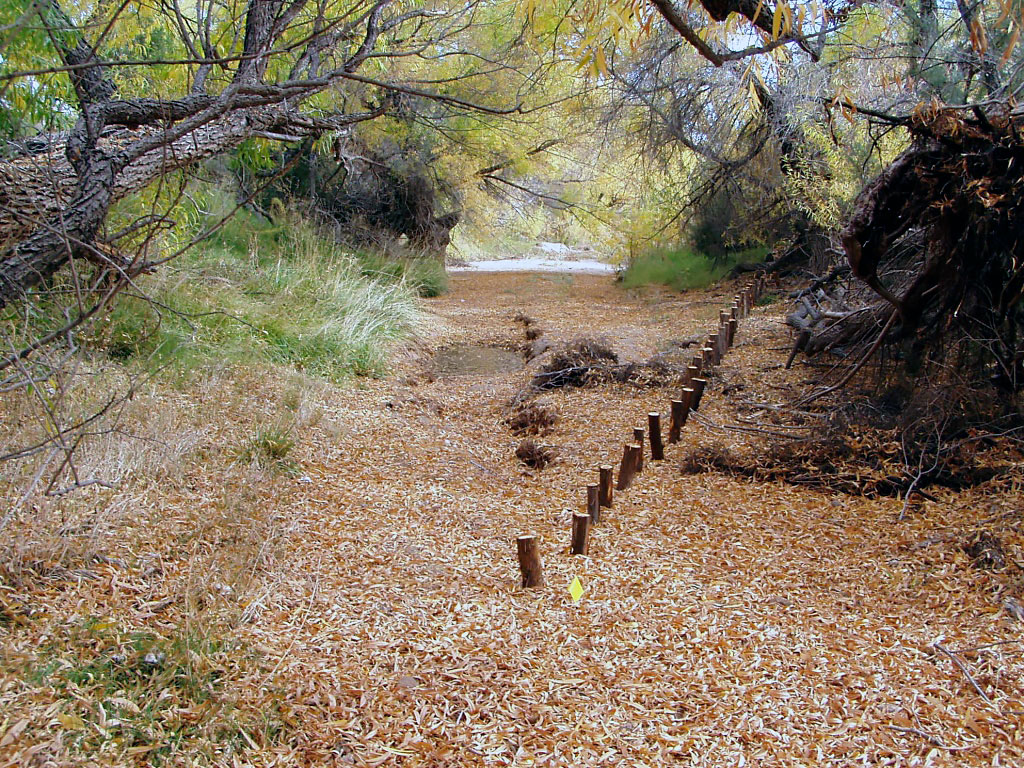Carbon Sequestration
 The climate and species extinction crisis has led us to be firm believers in agrarian reformer Wes Jackson’s lament that “We live in the most important moment in human history.” Climate change is not only the defining issue of our age, but the most important issue in human history.
The climate and species extinction crisis has led us to be firm believers in agrarian reformer Wes Jackson’s lament that “We live in the most important moment in human history.” Climate change is not only the defining issue of our age, but the most important issue in human history.
The solution is now well known: zero-carbon sources of renewables, weatherization, the elimination of our consumptive life way, mass transit and restoration. “The Great Transition” out of the fossil-fuel economy will stop the current civilization-threatening flow of carbon into the atmosphere, but what about the legacy load of carbon already there?
Before humans transitioned away from the foraging and hunting way of life to the current place-based living and growing crops way of life — the agricultural revolution with forest clearing, irrigation and plowing — the carbon dioxide (CO2) content in the atmosphere was around 260 parts per million (PPM). During the 8,000 years before the mid-18th century Industrial Revolution, CO2 increased from 260 PPM to only 275 PPM, but spiked from 275 PPM to 400 PPM by 2014, an increase of only 15 PPM over 8,000 years to a stunning change of 125 PPM in 260 years. There is now a consensus that the sensible target for survival is to return to a CO2 level of no more than 350 PPM.
A number of states in North America have lost as much as 50 percent of their soil carbon in the last 200 years. In some areas of the world, cultivation has been going on for millennia, and soil carbon depletion is much higher—up to 80 percent or more. The world’s soils have lost up to 80 billion tons of carbon. For eons, this carbon was underfoot, but now it’s floating in the evermore warming atmosphere. The solution to the CO2 legacy-load burden is to return the risky 50 PPM to the soil with the process of photosynthesis — the most essential natural process for life on the planet and the basic building block for all life, Nature's Opus — that we learned about as children. When sunlight reaches vegetation, plants absorb atmospheric CO2, a naturally occurring chemical compound. C stands for carbon, O for oxygen and the number 2 means two oxygen atoms are bonded to a single carbon atom. The plant then breaks the C apart from the O2, consumes the carbon and returns the oxygen for us to breathe. After the oxygen is released back into the atmosphere, the plant then converts the remaining carbon into high-energy sugars and carbohydrates the atmosphere, the plant then consumes 40% of the carbon for itself and converts the remaining carbon into high-energy sugars and carbohydrates for the subsurface tiny animal world, whose health is critical for plant life and, in turn, us.
Properly managed land can draw down tons of the legacy load of atmospheric carbon per acre while improving the land’s fertility, capacity to hold water and thus the ability to grow more and healthier food. Rangelands blanket approximately 770 million acres in the United States and constitute about one-third of the planet’s ice-free land surface. Managing these ecosystems with an emphasis on sequestration can return atmospheric carbon to a livable 350 PPM. Rattan Lal, Director of Ohio State University’s Carbon Management and Sequestration Center, maintains that adoption of no-till agriculture and other land management practices could reverse global warming by reducing carbon by 3 PPM per year. Lal maintains that this exchange of CO2 between soil and the atmosphere could draw the atmospheric CO2 count, at just 3 PPM a year, back to the 350 PPM level in 17 years.
Each blade of grass is like a straw, pulling carbon out of the air and into the plant’s tissues where it is converted to sugars and piped into soil. The blade-of-grass as “straw” metaphor complements the similar blade-of-grass as “dam” comparison in the context of restoration. When water flows in sheets down slope across the land surface or a flood flows down channel, suspended sediment bumps into the vegetation and slows down or drops, lessening erosion and adding soil to the surface. In this respect, the blade of grass provides a “two-for-one” benefit of both building soil and sequestering carbon. For us, that is where the notion of the carbon capturing “sweet spot” and ciénaga restoration merge.
 When Lucinda and I began the ciénaga and grassland restoration on the Pitchfork Ranch in 2005, our focus was on restoring this nine-mile reach of the 46-mile-long Burro Ciénaga and the grasslands for endangered species, other “at-risk” plants and animals, range-fed and range-finished cattle and wildlife in general. We soon realized the risks associated with climate breakdown, and, as solutions became known to us, our thinking about landscape restoration broadened to include carbon sequestration. The work embraced the added focus beyond habitat restoration for the use by animals to include land utilization as a means of climate adaptation, playing a small part in removing the legacy load of carbon from the atmosphere.
When Lucinda and I began the ciénaga and grassland restoration on the Pitchfork Ranch in 2005, our focus was on restoring this nine-mile reach of the 46-mile-long Burro Ciénaga and the grasslands for endangered species, other “at-risk” plants and animals, range-fed and range-finished cattle and wildlife in general. We soon realized the risks associated with climate breakdown, and, as solutions became known to us, our thinking about landscape restoration broadened to include carbon sequestration. The work embraced the added focus beyond habitat restoration for the use by animals to include land utilization as a means of climate adaptation, playing a small part in removing the legacy load of carbon from the atmosphere.
Recent science publications maintain that natural climate solutions can capture 37 percent of the Paris Climate Agreement committment by using a combination of 21 natural climate solutions, habit restoration is considered on of the most promising. See: Bronson W. Griscom, Natural Climate Solutions, Proceedings of the National Academy of the Sciences, October 17, 2017, https://doi.org/10.1073/pnas.1710465114, Joseph E. Fargione, et al, Natural Climate Solutions for the United States, SciencecAdvances, 14 November, 2018, Vol. 4, no. 11, eaat1869, DOI : 10.1126/sciadv.aat1869. Carbon sequestration is now an additional feature of what we do here associated with the climate and species extinction crises. For us, this added feature of sequestration is an informed, bold and hopeful understanding — the interaction between soil and climate, between soil carbon and global warming — and a realization that everyone on the land can participate in reducing atmospheric carbon. “All you can do is do all you can.”
